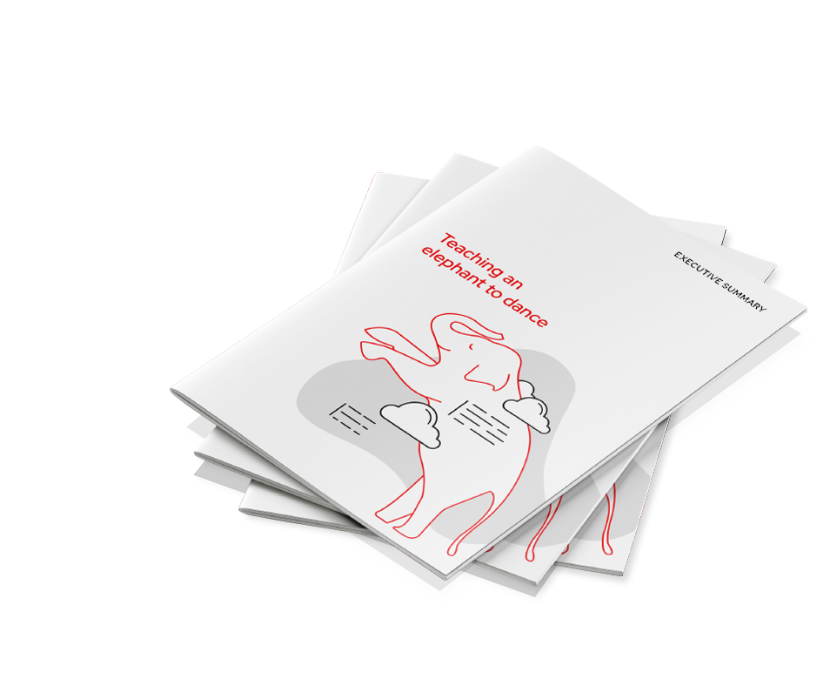Executive summary
Teaching an elephant to dance:
Strategies to gracefully make changes to teams, processes and tech for a successful digital transformation

Proven approaches to digital transformation
The elephant in the room is your organization’s current technical landscape. While every organization would love to work in a modern technical environment powered by microservices and DevOps, most organizations have layers of infrastructure and hierarchy to rebuild. For these businesses, the challenge is teaching their current elephant to dance like a nimble ballerina.
You are not alone. Most companies are making strategic changes to their business. Reducing costs, getting ahead of the competition, being more responsive to customer needs –these are all good reasons to embrace new architectures and ways of working.
Find quick, relevant advice on becoming a more nimble organization in this executive summary of the popular e-book “Teaching an elephant to dance.”
There is no single architectural pattern or technology platform that works flawlessly in every single environment.
The organizations that win at digital transformation are the ones that have the clearest understanding of their own goals and culture, and it looks different for each of them.”
Advance your digital transformation with these key strategies:
Reflect:
Learn what we mean by
“teach an elephant to dance”
Assess:
Define what digital
transformation means to you
Process:
Get steps to achieve your
transformation goals
Innovate:
Become more responsive
to business challenges
